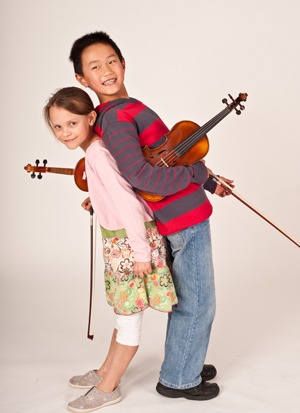The Suzuki Method
Why use the Suzuki Method?
Suzuki music education combines instrumental teaching with a philosophy embracing the total development of the child.
“Character first, ability second.” Dr Suzuki
Suzuki Method Is:
- Child Centred Learning that respects and values your child
- Fosters the Character and Ability of your Child
- Grows ability at your child’s rate
- Offers musical, social & cognitive development for your child
- Starts very early from 0yrs up
- Nourishes the spirit
- Supports the parent
- Is nurturing beyond music
“Musical ability is not an inborn talent but an ability which can be developed. Any child who is properly trained can develop musical ability just as all children develop the ability to speak their mother tongue. The potential of every child is unlimited.” Dr Suzuki
Dr Suzuki has called his teaching method the Mother-Tongue Approach. It was inspired by the knowledge that all children learn to speak their native tongue in the supportive environment of their family.
When a child learns to speak, the following factors are at work:
- Listening
- Motivation
- Repetition
- Step by Step Mastery
- Memory
- Vocabulary/repertoire
- Parent Involvement
- Loving encouragement
In the Suzuki approach each of these principles is used in the learning of an instrument (piano, violin, viola, cello, flute, guitar and voice).
Following the parallel with language learning, musical training may also start from birth. As the parents lead with language learning likewise with the support of a trained Suzuki teacher, the child will easily develop music ability. As with language, musical language begins at birth. Suzuki Early Childhood Education runs programs for 0-3year olds and 3-5 ½ year olds. Formal instrumental lessons may begin from 2-3 years of age depending on their readiness.
LISTENING
Suzuki teaching emphasises listening to recordings of the Suzuki repertoire, as well as music in general.
Studies show that the more frequently the students listen to the recordings, the more easily they learn to play.
Frequent listening to music performed with beautiful tone provides children with a role model for their playing. In the lessons the production of fine tone and sensitive playing is stressed from the beginning.
Music reading is postponed until the child’s aural and instrumental skills are well established, just as we teach children to read after they can speak. If children begin as preschoolers the reading begins at the same time as it would in literacy skills..
MOTIVATION
Students are motivated to learn through:- involvement with the parent; the shared experiences of watching lessons of other students and participating in group workshops and concerts;
Lessons and home practice that reflect the developmental stage of the child and that are enjoyable help motivate the child.
Suzuki method fosters an attitude of cooperation supporting all student’s accomplishments.
REPETITION
The unique order of the repertoire allows each piece to become a building block for future learning. Technique, musicianship and style are developed through the study and repetition of these pieces.
Each instrument has its own repertoire. This provides familiarity and hence excellent motivation to progress. Through the common repertoire children have a bond with Suzuki students world-wide.
However, the spirit of Suzuki teaching may encompass all styles and periods of music. Teachers often give supplementary material which may help to widen the students’ musical experience.
STEP BY STEP MASTERY
By moving in small steps the child can master each skill. This motivates the child to strive further.
Students are encouraged to review their pieces and to gain mastery over the techniques inherent in each piece when progressing through the repertoire. Children move at their own pace with the support of their parents or care-givers. With mastery comes the development of the child’s self-esteem.
MEMORY
Students listen to the music, play it and easily commit it to memory. This greatly enhances the child’s aural sensitivity and makes them good aural learners. They gain the confidence to perform because the music is a part of them.
REPERTOIRE
With the standard repertoire, mastery of skills and memorising of the pieces, students are able to develop a huge portfolio of music – something they can share with other members of their community. So much of the repertoire used by Suzuki is recognisable wester Art music.
PARENT INVOLVEMENT
In the Suzuki approach learning takes place in an environment of co-operation between teacher, parent and child. The parent’s role is crucial to this process.
The parent’s role involves:
- Attending each lesson with the student, taking notes, and practising with the student at home.
- Playing the recordings daily at home.
- Understanding the instrument and how to take care of it.
- Helping to create an environment of affection, support, encouragement and understanding around the instrumental learning process.
- Attending workshops, concerts, group lessons, graduations and summer schools with the child
LOVE
Dr Suzuki wrote many essays and lectures, but his primary account of his teaching method is called “Nurtured by Love”. The “Nurture” comes from his conviction that ability (musical or other) is not inborn but needs to be developed through the right environment. “Love” – because Suzuki music teaching is not about creating musicians or about simply developing skills in children. It is about the amazing potential of all human beings to grow into sensitive, disciplined and active members of a community through exposure to an environment that values and loves them for who they are. The glue that binds ability and sensitivity is love.
